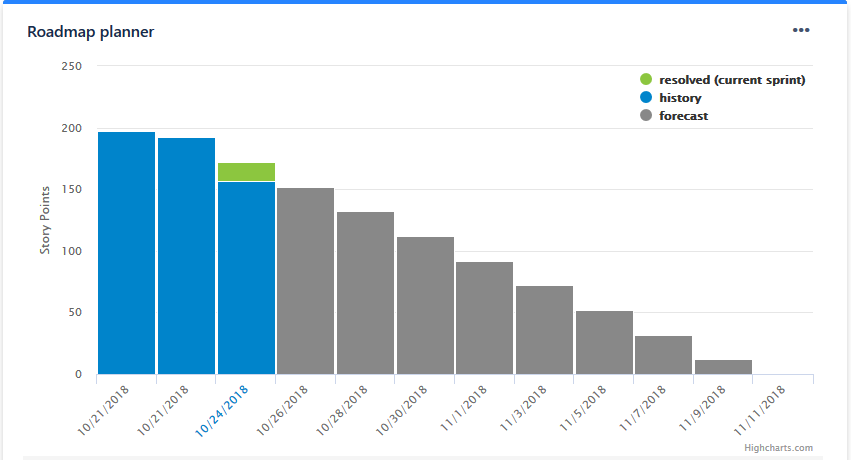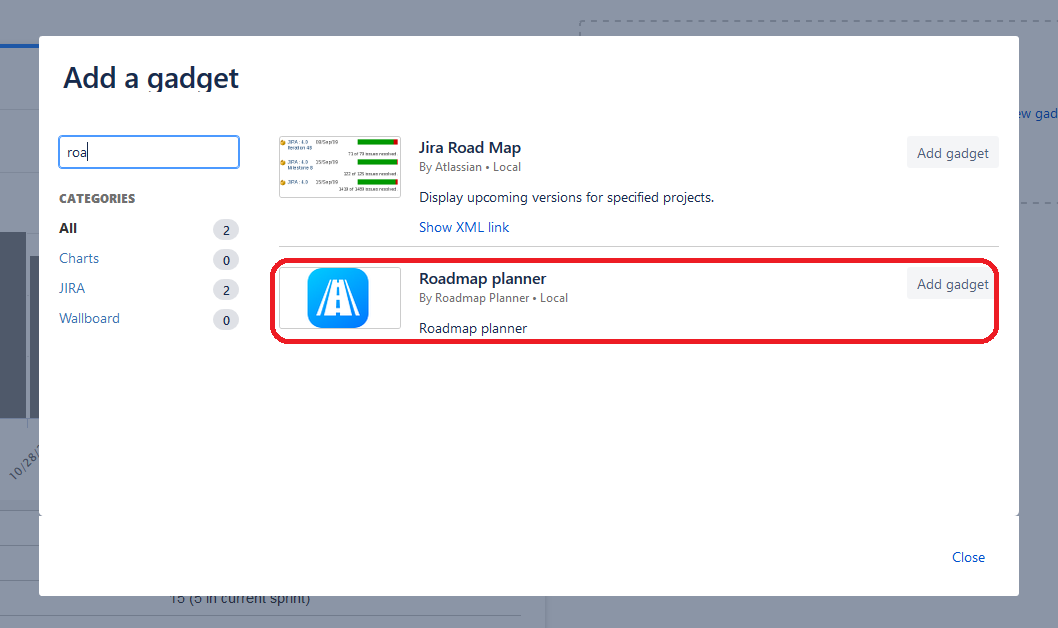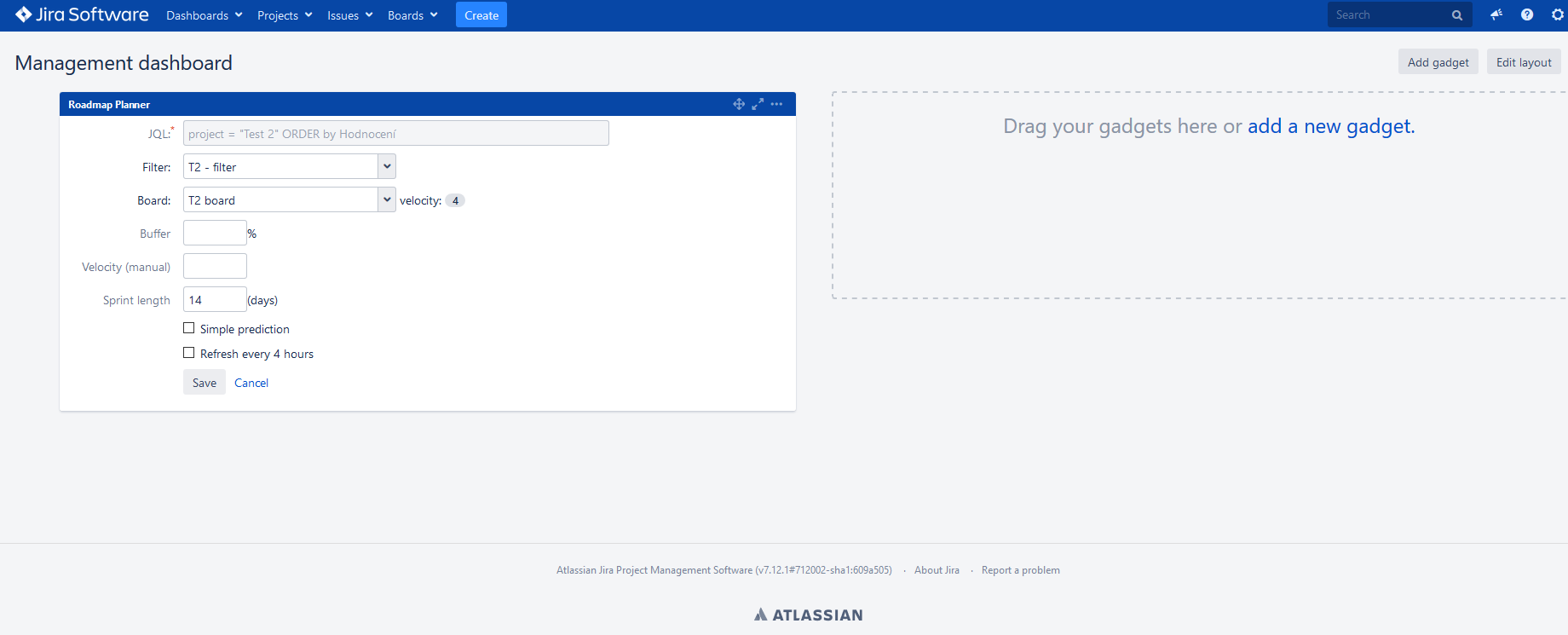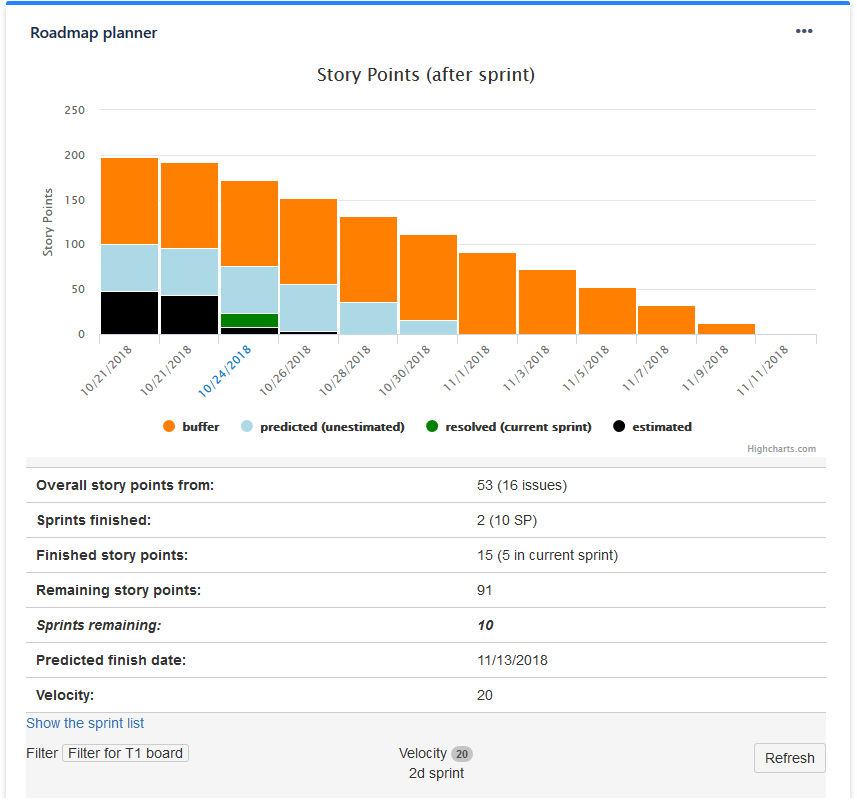Roadmap Planner
Create easy & up-to-date release predictions with our Jira® App!
This app helps to automate roadmap planning & reporting towards management. In case your team has
already created list of stories (needed to fullfil your roadmap plan - describing a milestone that you
want to achieve) and there's historical data available for your project in Jira, this app enables you
to have up-to-date, fully automatic reports, that anybody from the company can have a look into.
In case he/she is willing to see the progress - as well as prediction of when can they expect the
roadmap to be fully implemented and working on your production environment. At the very same time, it
helps the team members to focus on real work (instead of tiering, repetetive re-estimations).
Stay up to date
Just imagine. Another important project started. You estimated many stories up-front in order to create the big picture and have a rough idea of when the project could be delivered. But as time goes, requirements changed. Or you just forgot something. Now you need to go back to the development team and re-estimate all over again to get up to date roadmaps in Jira®. Sounds familiar?
Now try to imagine a little bit different picture. You've broken down an Epic into subsequent Stories, only some of them are estimated. But based on your historical data, you still have an idea of what the average size of a Story is, so it is still possible to guestimate when the project could be finished.

Now, this is exactly what our dashboard gadget does. It takes the Stories you know, calculates what you don't know and puts it into a time frame (product roadmap). The plans can of course change, but so will the calculated timeline. As you move forward and get more stories estimated, the calculation gets more precise. But the most important thing - you will always have an up to date statistics - serving as a single point of truth. Everything calculated in real time. No more need to export the data into a spreadsheet, never doing a re-estimation all over again. It is as simple as it could get! Download here
Configuration
Phase 1 - backlog identification
During this phase - the roadmap creation (assuming your team/product vision is defined), first thing you
want to do is to create a set of user stories, that need to be implemented to fulfil the expectations
of the customer. Don't forget to ask yourself frequently - "are we still creating MVP?". To help with
creating such user stories, our favourite technique to do that is User story mapping, there are other ways to do
this though.
We recommend using this technique, as it helps nicely to visualize the whole workflow of
actions that need to take (increasing chance that you didn't forget anything important). Also, it
supports intra-team cooperation, which is great for help for high efficient teams. There are online
tools, apps to help with this activity; some people prefer sticky notes that do the job done (maybe
even better).
If there are significant questions open, you probably need to do more analysis, you
probably want to spend more time thinking, what are the actions that need to happen - to fulfil the
expectations of the delivery (of the milestone). Once the stories are created and it doesn't seem that
you're missing anything important, you're ready to proceed with Phase 2!
Phase 2 - using Roadmap planner app
- Go to dashboard on which you're willing to place the Dashboard Item (Gadget)
- Add Dashboard Item (Gadget) called Roadmap Planner to the dashboard
- Fill in the milestone details on the gadget configuration screen
- JQL - query to match issues related to your roadmap
- Filter - instead of directly inserting your JQL, you can use saved filter that can be selected from the dropdown menu
- Board - chose board that you use to track your work (this will be used as an input for the AVG Velocity calculation)
- Calculate teams velocity - automatically calculate velocity based on available historical data for the project
- Velocity (manual) - override calculated velocity with your own value (i.e. in case of vacations, team changes,...)
- Sprint length - number of days in sprint (including non-working days)
- Simple prediction - check to use simple version of the prediction report (to be easilly unserstood), or uncheck for analytical type of report
- Refresh every 4 hours - check to get up-to-date info


4. Click on button "Save" and now you see your expected milestone prediction - easy!

5. Don't to forget to share your dashboard - including relevant filter(s) with the key members of your group :-)
Some more details
Now you can use a brand new detailed report to understand the prediction in more detail (by seeing what was actually estimated and what was calculated by the prediction app).

And how does the app work? First it checks the board you've inserted, from which it calculates average velocity & average storyponts per story. Then it checks all the issues that are relevant for your saved filter (or JQL). Then, it checks, how many issues were estimated. For those, which don't have estimation field filled in, it filles in the average storypoints to all unestimated issues.
Finally, from the combination of total storyponts and velocity it predicts the expected date of the last closed story. On top of this, due to new functionality, you can also add buffer - for instance if it's set to 30%, the overall storypoints for the filter/JQL is stretched by factor of 1,3. Happy predicting!
